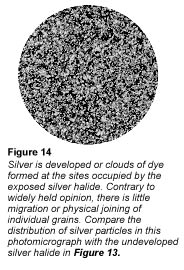|
|
This topic comprises 3 pages: 1 2 3
|
|
Author
|
Topic: The "Physics" of Motion Picture Projection.
|
Will Kutler
Phenomenal Film Handler

Posts: 1506
From: Tucson, AZ, USA
Registered: Feb 2001
|
 posted 11-10-2004 06:36 PM
posted 11-10-2004 06:36 PM




One of my current college courses is Physics 112 (Basic Physics II). I would highly recommend this class to those of you who want to get a little better understanding of what makes projection equipment work. This is a generall education class offered at just about any community college or university.
Topics include basic electricity, magnetism, light, reflection (mirrors), lenses, etc.
However, this class does not delve deep into practical topics such as VOM/Multi-Meter usage, electrical component idetification, soldering, etc. A basic electronics course will cover these topics.
| IP: Logged
|
|
|
|
|
|
Will Kutler
Phenomenal Film Handler

Posts: 1506
From: Tucson, AZ, USA
Registered: Feb 2001
|
 posted 11-11-2004 03:14 PM
posted 11-11-2004 03:14 PM




I think Manny needs to reread my origonal post. Physics 111 and 112 are the two basic "general ed" physics courses offered at all jr. colleges and universities. Just like freshman English, College Algebra, Trig. Calc., etc.
You can also find references and general help tutorials to these classes on the internet. One good source is WWW.PHYSICSCLASSROOM.COM (but I think this mostly deals with Physics 111).
And to further clarify myself, Physics 112 will help you understand how and why components like resistors and capicators work, the principles of Voltage, Amperage, Resistance and Wattage. How to calculate values in series, parallel and compound circuits. The principles of electromagnetism. What light is, different spectrums, how light bends, why and how mirrors and lenses work, etc.
| IP: Logged
|
|
|
|
|
|
|
|
|
|
John Pytlak
Film God

Posts: 9987
From: Rochester, NY 14650-1922
Registered: Jan 2000
|
 posted 11-12-2004 12:44 PM
posted 11-12-2004 12:44 PM





Each silver halide grain in a film is either exposed or unexposed (1 or 0 state). So at the molecular level, film IS digital, and has been for over a century! ![[Cool]](cool.gif) Film's great latitude comes from having millions of grains, with a wide variety of sizes (sensitivities), producing a tone scale well beyond that of typical digital systems Film's great latitude comes from having millions of grains, with a wide variety of sizes (sensitivities), producing a tone scale well beyond that of typical digital systems ![[thumbsup]](graemlins/thumbsup.gif) . The random distribution of grains also avoids aliasing artifacts . The random distribution of grains also avoids aliasing artifacts ![[Smile]](smile.gif) , unlike the fixed pattern of pixels in digital imaging systems. , unlike the fixed pattern of pixels in digital imaging systems. ![[dlp]](graemlins/dlp.gif)
So, Kodak has been a leader in Digital Cinema right from the start! ![[Big Grin]](biggrin.gif)
http://www.kodak.com/go/dcinema
quote:
ORLANDO, FLORIDA, (October 22, 2004) - Eastman Kodak Company announced today at the annual ShowEast Conference that the company is taking a major step forward in its goal of making high-quality digital cinema available for motion picture exhibitors around the world. The company is demonstrating the Kodak Digital Cinema Solution for Feature Presentations, a bundled package of hardware, software, and support services.
| IP: Logged
|
|
|
|
|
|
|
|
|
|
|
|
|
|
|
|
All times are Central (GMT -6:00)
|
This topic comprises 3 pages: 1 2 3
|
Powered by Infopop Corporation
UBB.classicTM
6.3.1.2
The Film-Tech Forums are designed for various members related to the cinema industry to express their opinions, viewpoints and testimonials on various products, services and events based upon speculation, personal knowledge and factual information through use, therefore all views represented here allow no liability upon the publishers of this web site and the owners of said views assume no liability for any ill will resulting from these postings. The posts made here are for educational as well as entertainment purposes and as such anyone viewing this portion of the website must accept these views as statements of the author of that opinion
and agrees to release the authors from any and all liability.
|

 Home
Home
 Products
Products
 Store
Store
 Forum
Forum
 Warehouse
Warehouse
 Contact Us
Contact Us




 Printer-friendly view of this topic
Printer-friendly view of this topic






![[Roll Eyes]](rolleyes.gif)




![[evil]](graemlins/evil.gif)


![[Cool]](cool.gif) Film's great latitude comes from having millions of grains, with a wide variety of sizes (sensitivities), producing a tone scale well beyond that of typical digital systems
Film's great latitude comes from having millions of grains, with a wide variety of sizes (sensitivities), producing a tone scale well beyond that of typical digital systems ![[thumbsup]](graemlins/thumbsup.gif) . The random distribution of grains also avoids aliasing artifacts
. The random distribution of grains also avoids aliasing artifacts ![[Smile]](smile.gif) , unlike the fixed pattern of pixels in digital imaging systems.
, unlike the fixed pattern of pixels in digital imaging systems. ![[dlp]](graemlins/dlp.gif)
![[Big Grin]](biggrin.gif)





